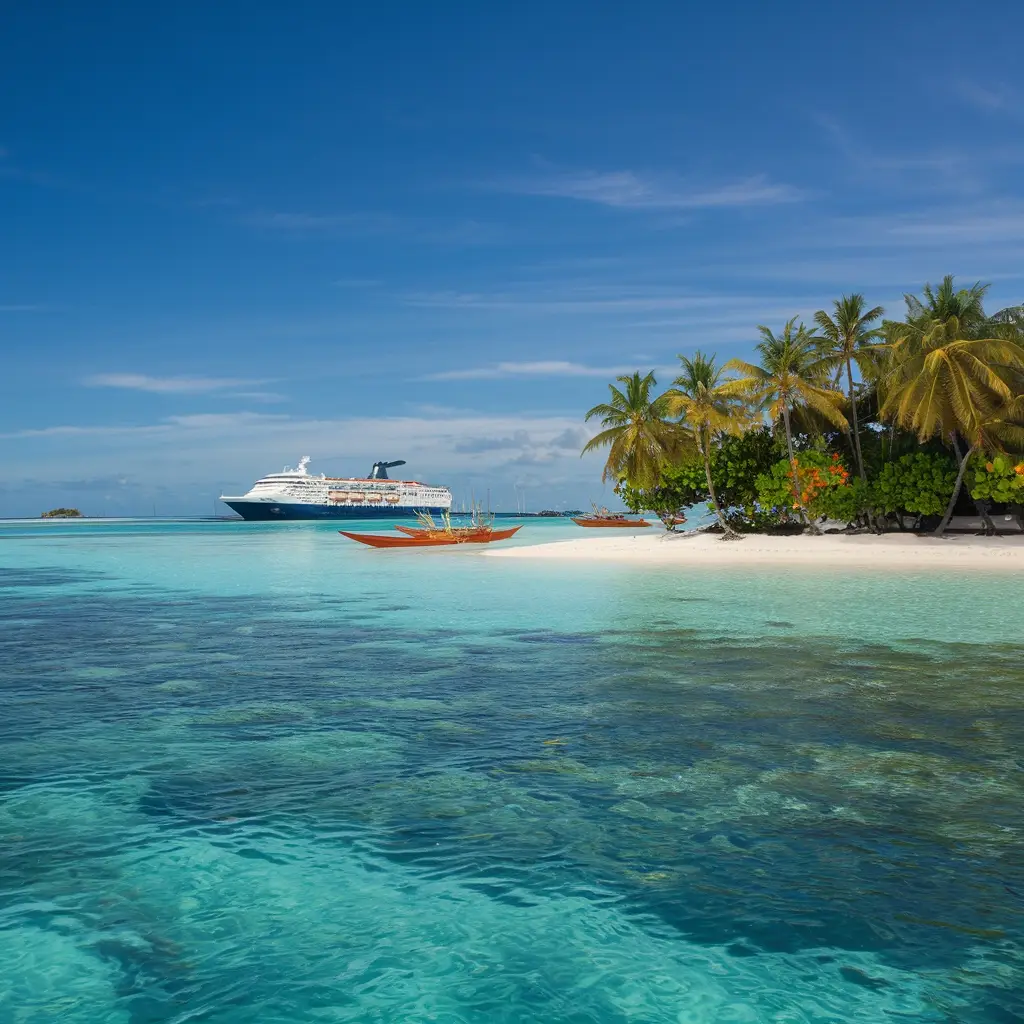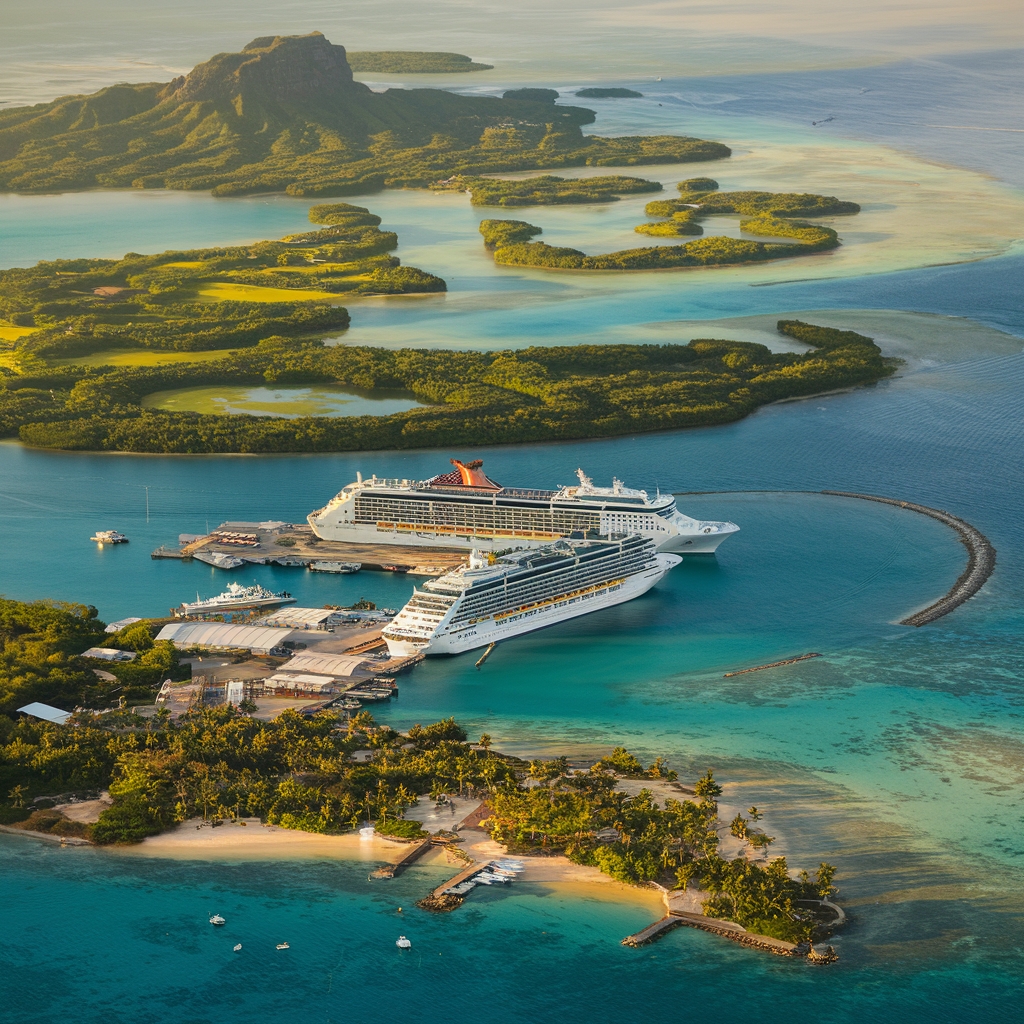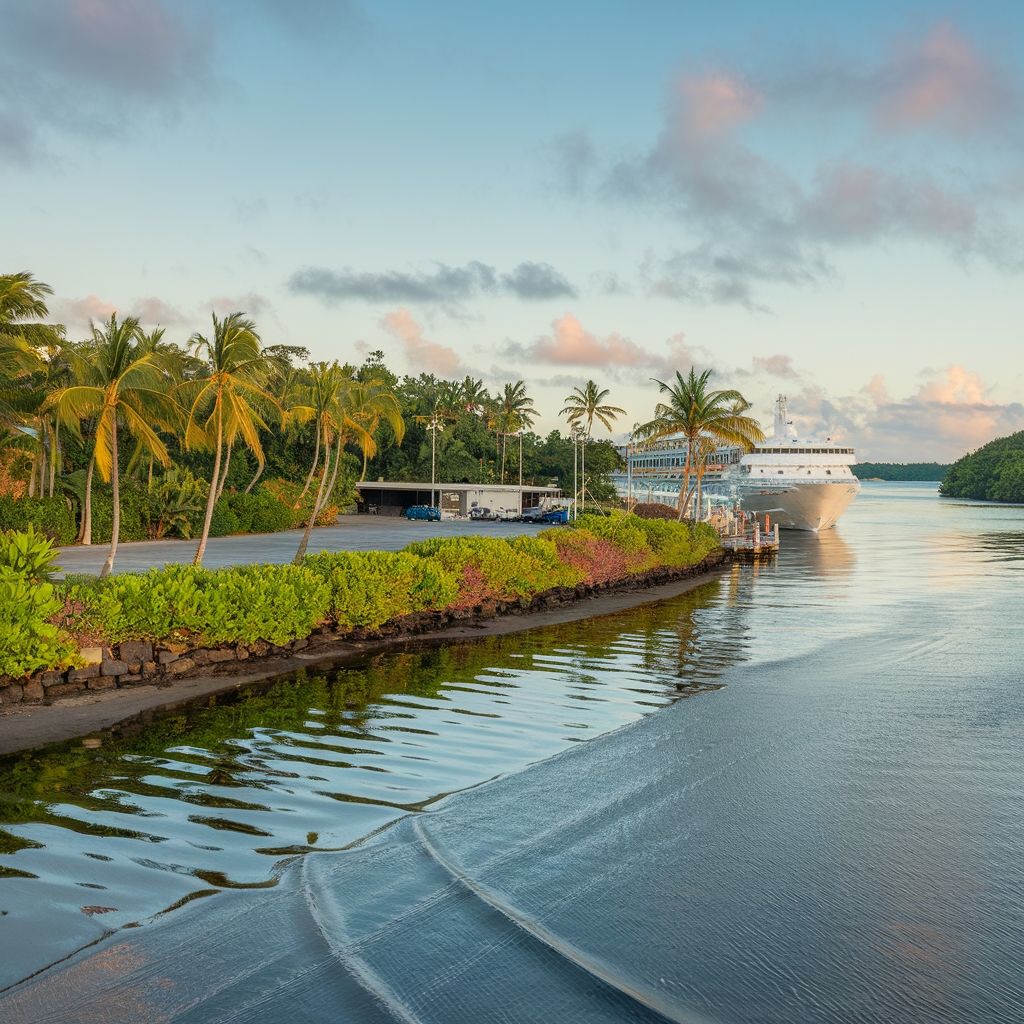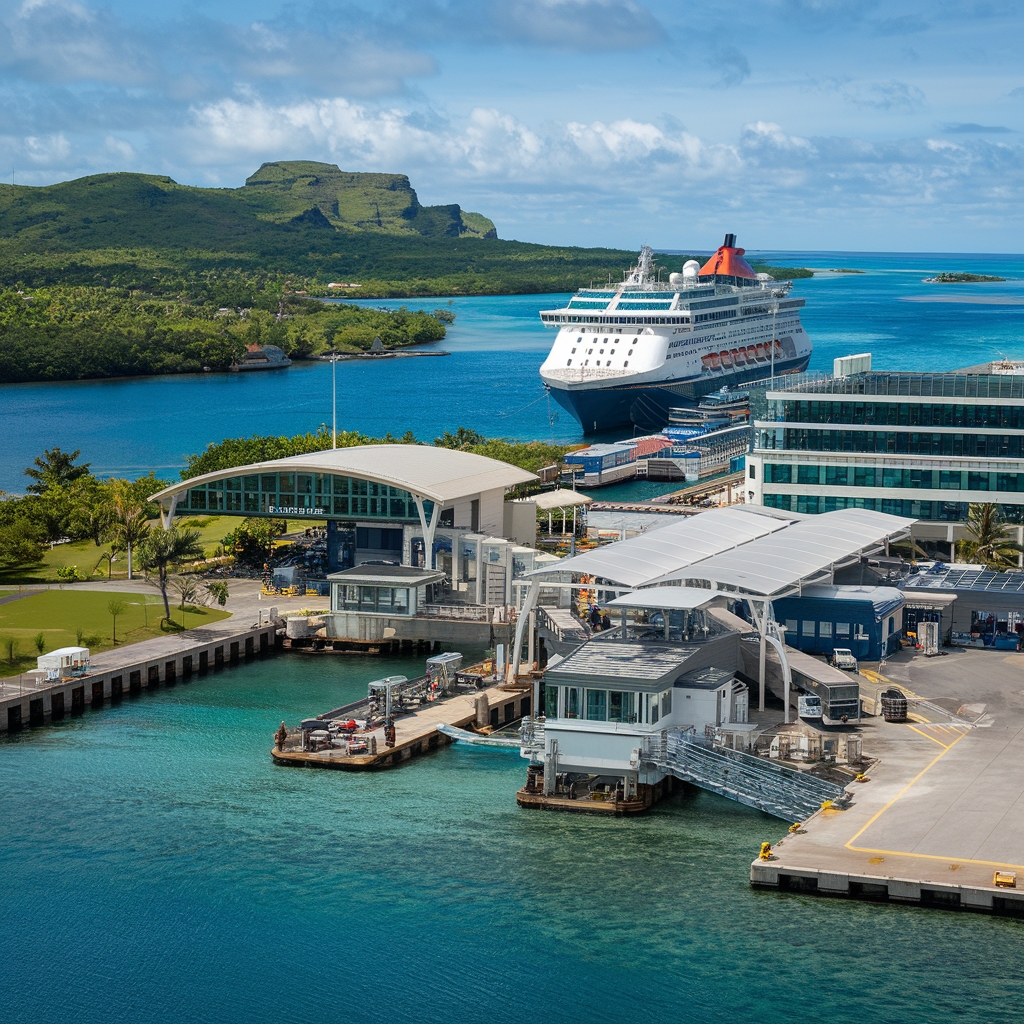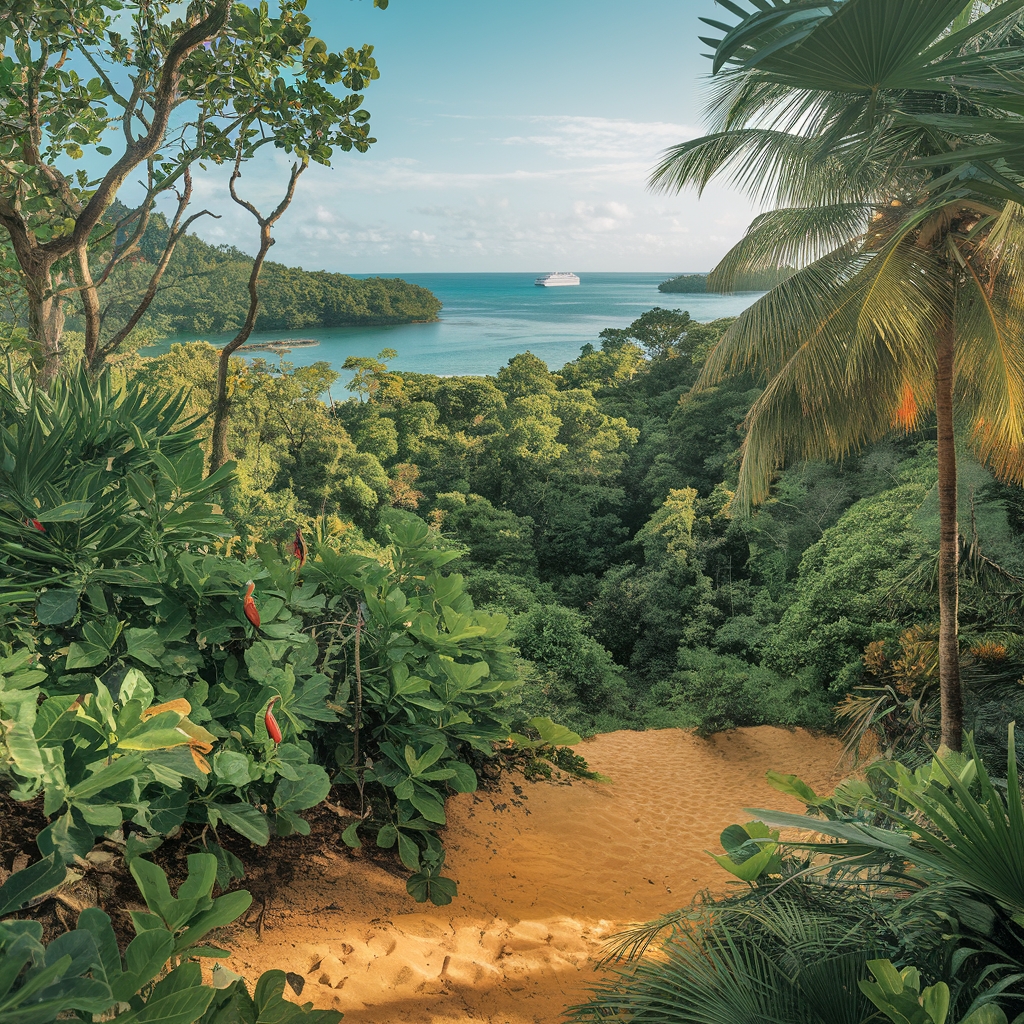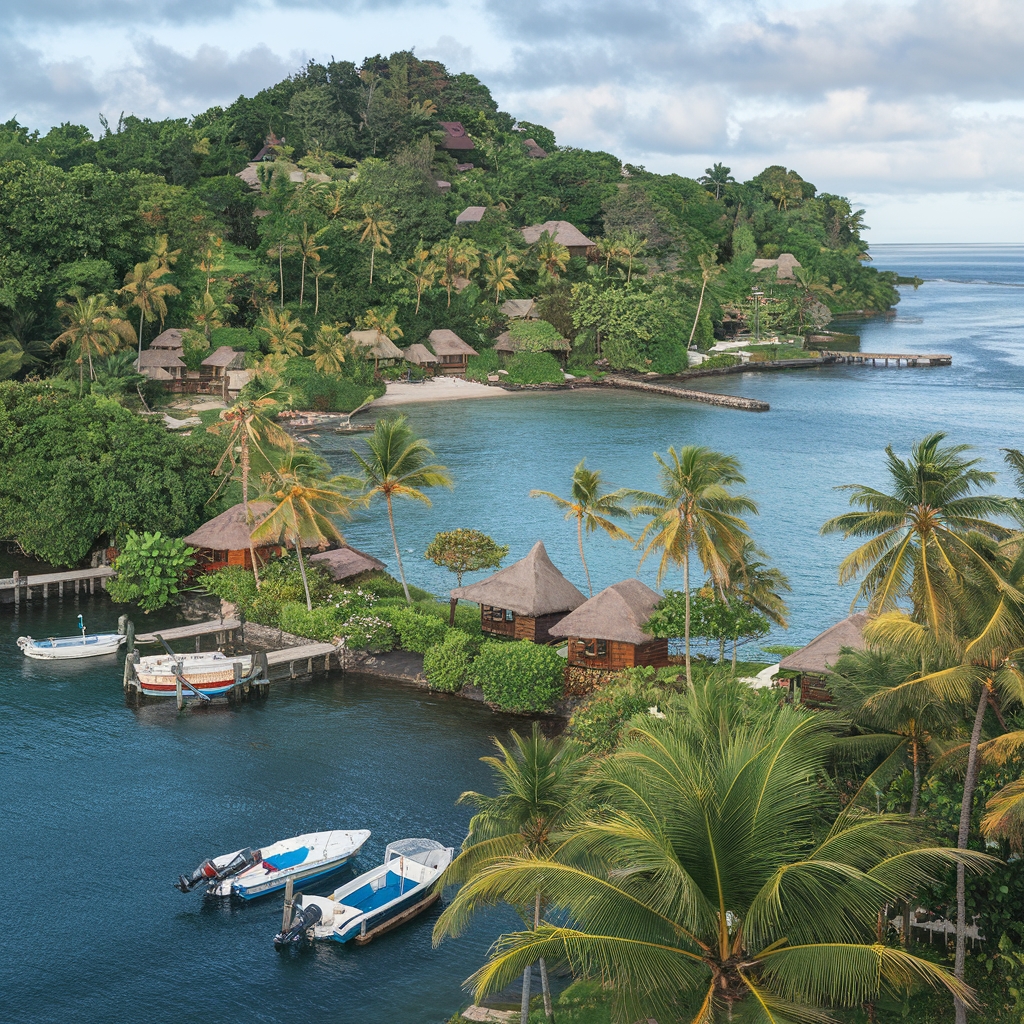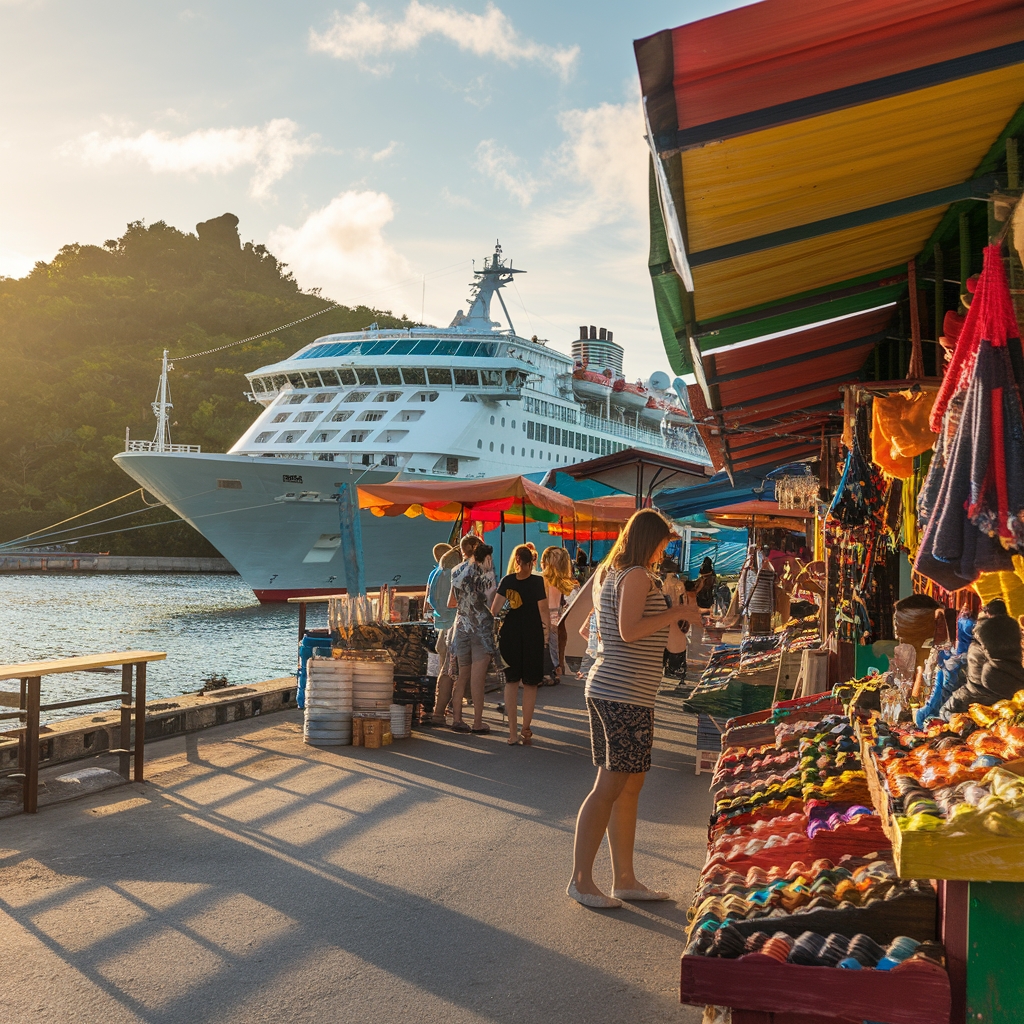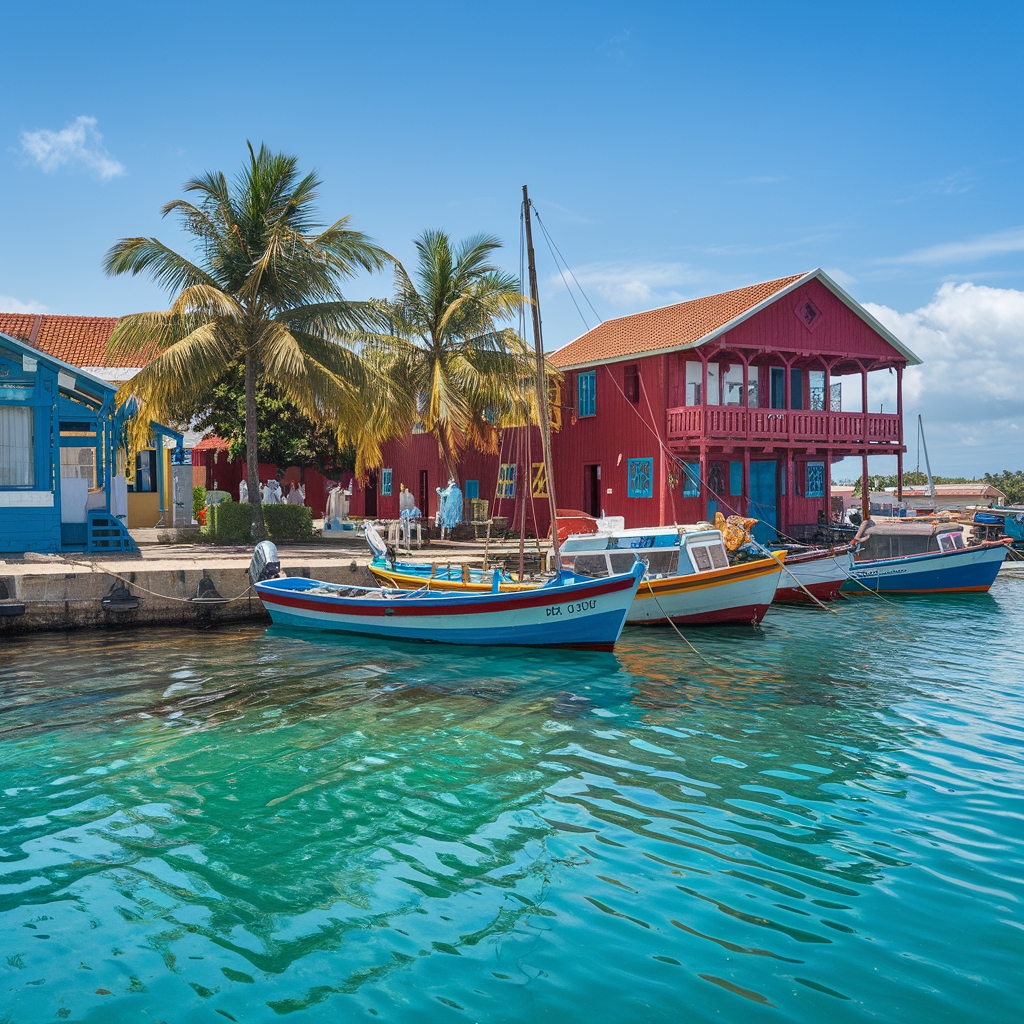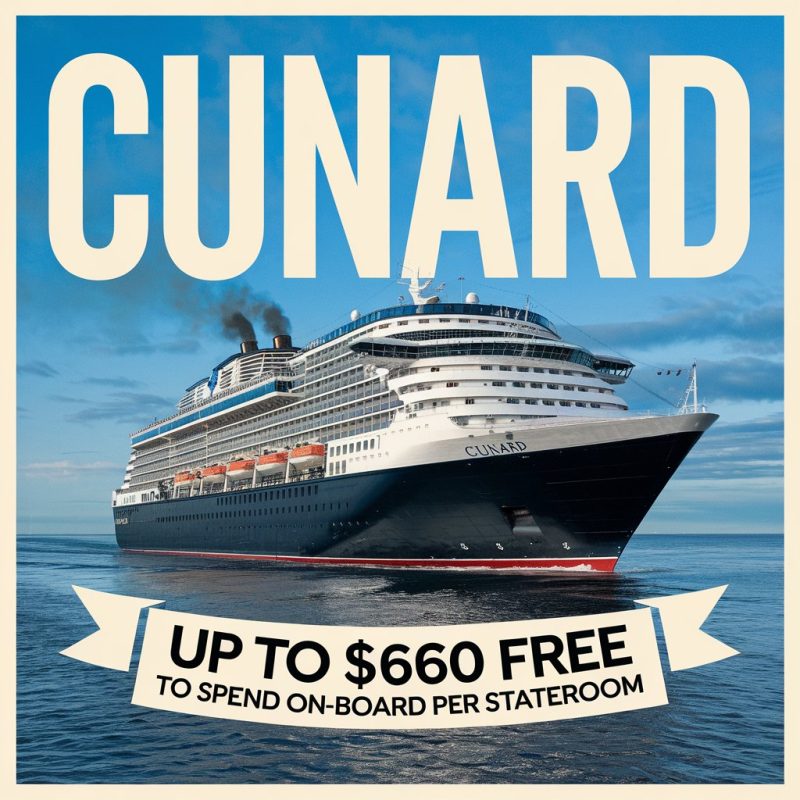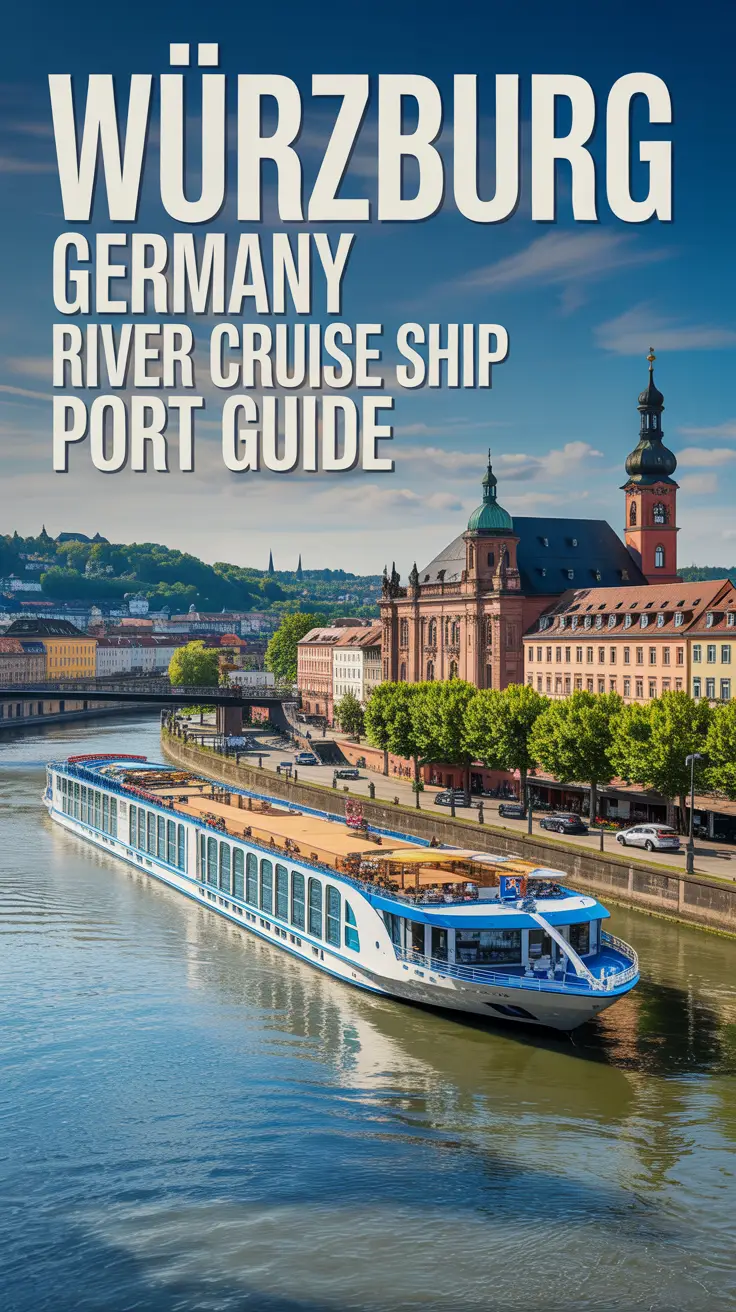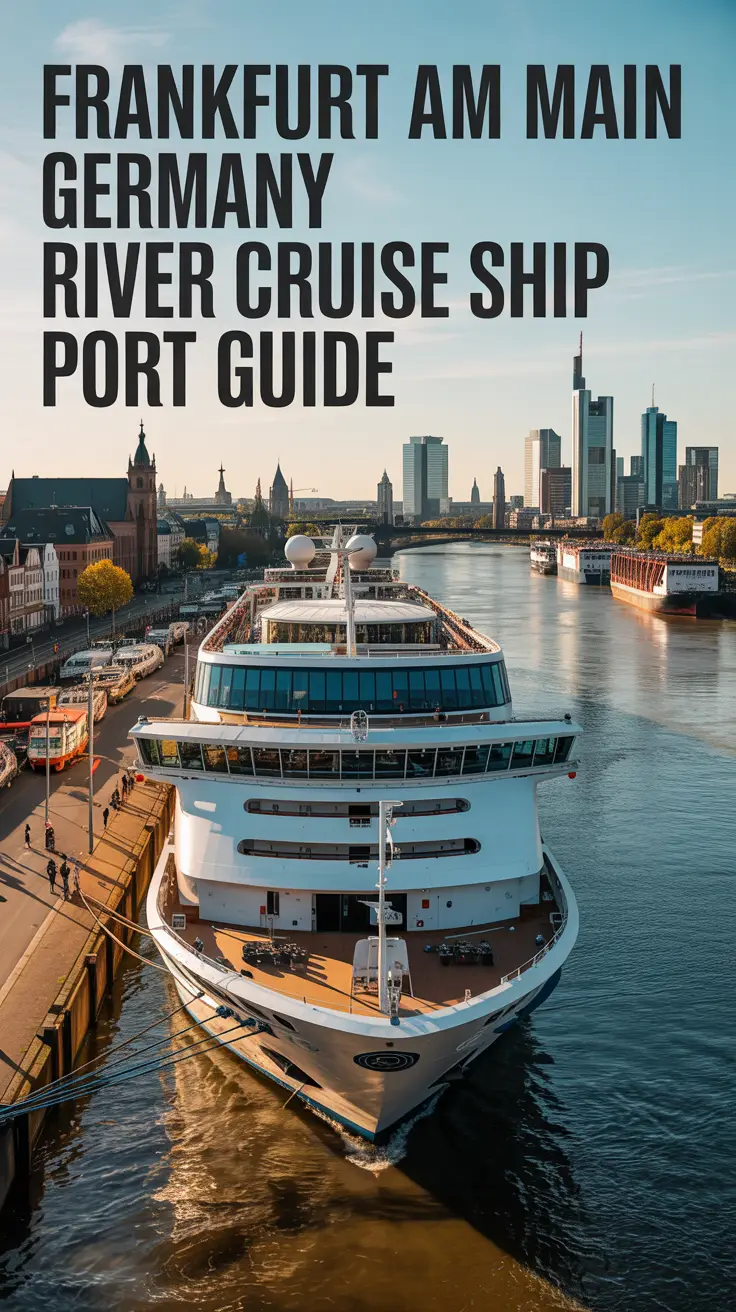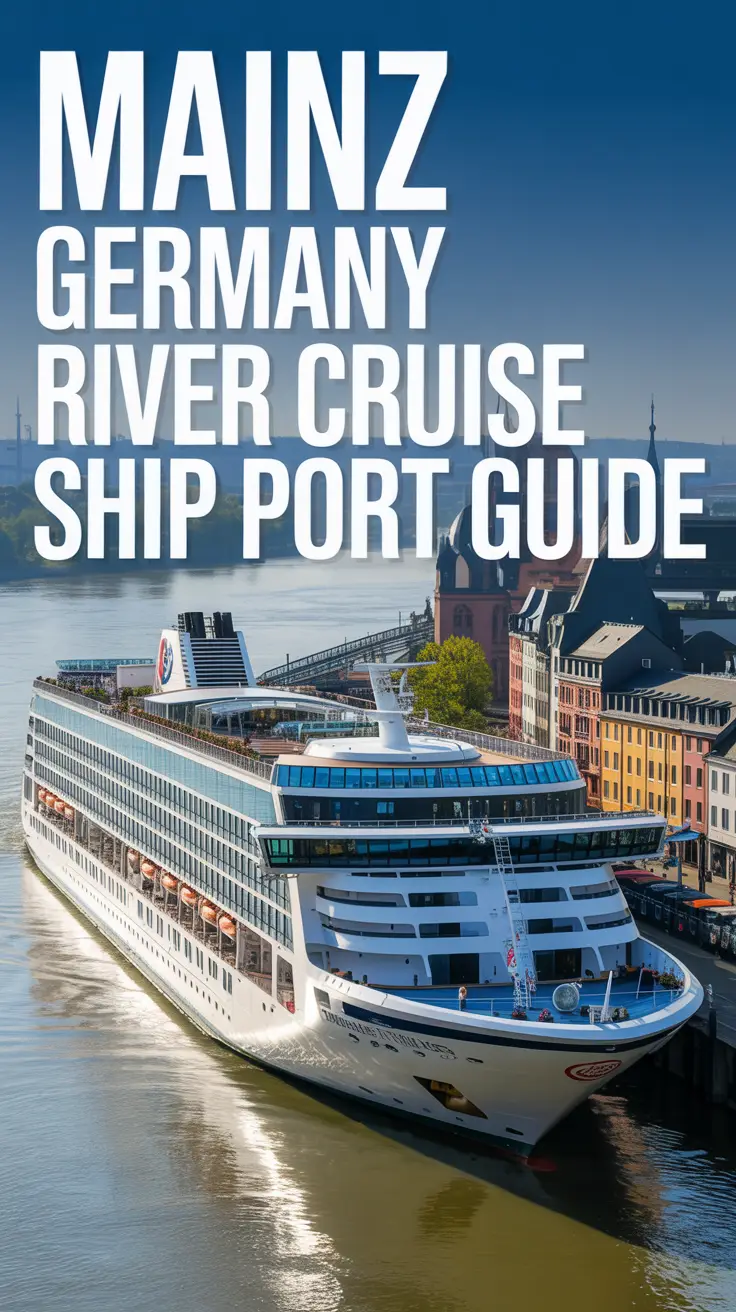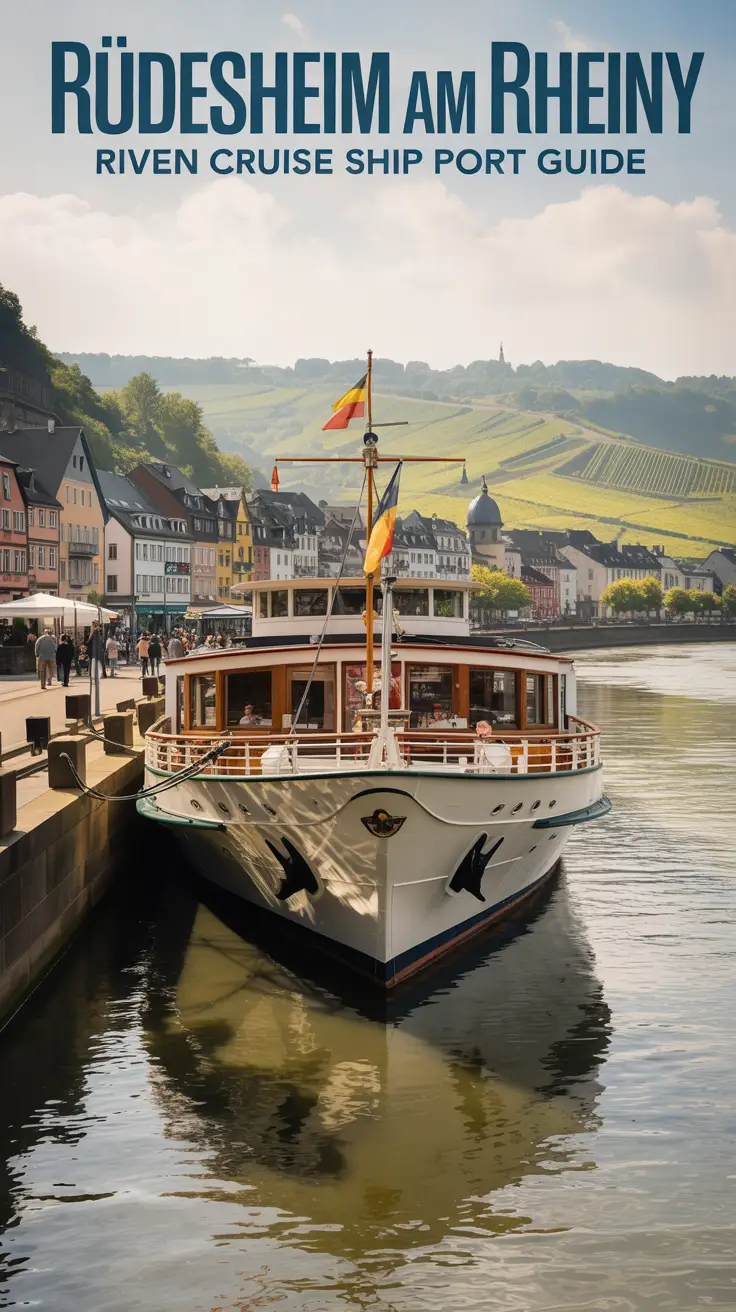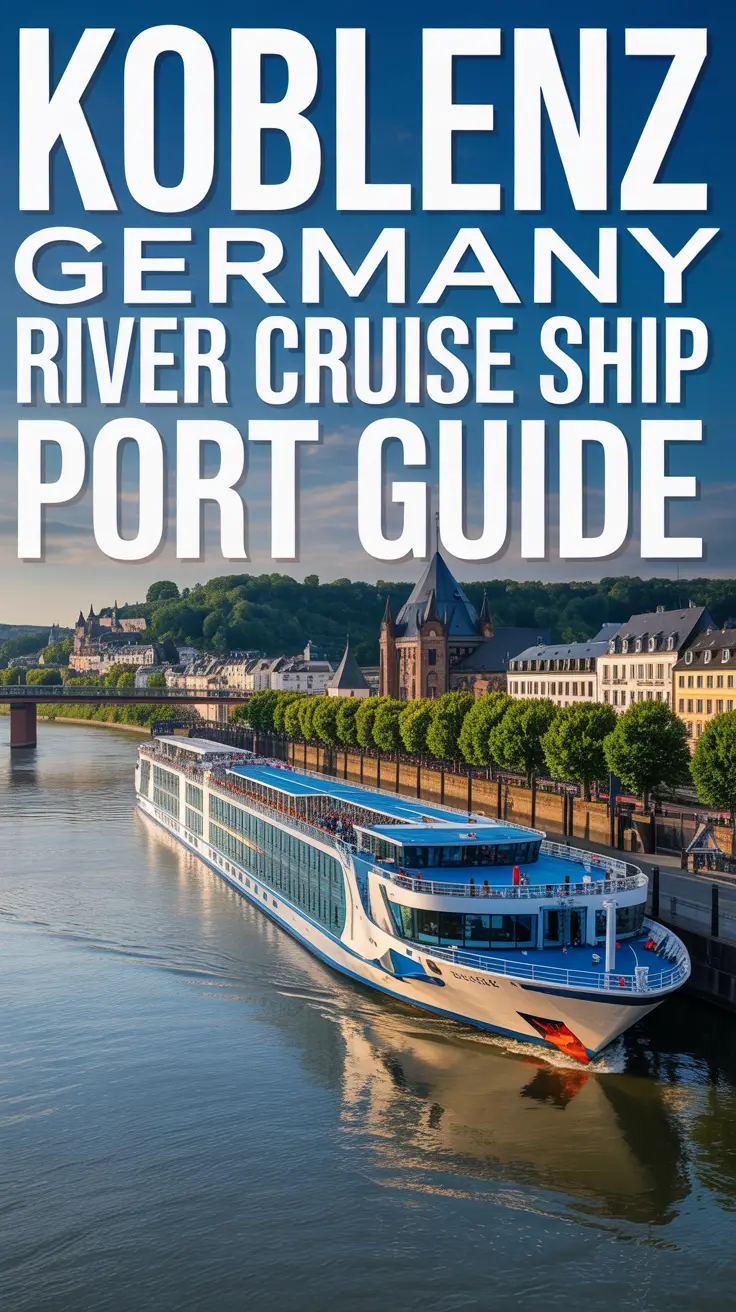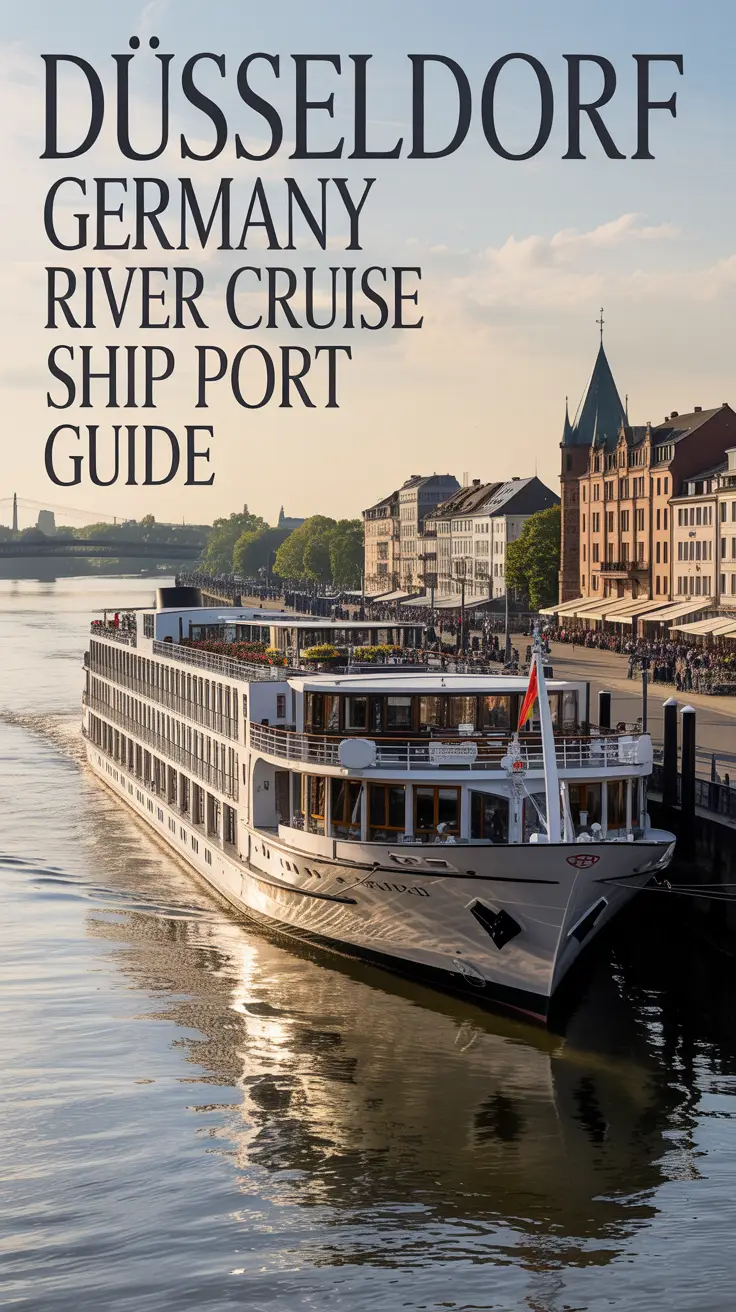Caravela Island sits in Guinea-Bissau’s UNESCO Biosphere Reserve and you’ll need to hop on tender boats to reach its rustic wooden jetty.
For other Guinea-Bissau Cruise destinations check out our Guinea-Bissau Cruise Ship Port Guide page.
Make sure you pack your passport, yellow fever vaccination card, and bring cash (CFA francs or euros) since credit cards aren’t really a thing here.
The sweet spot for visiting is November through April when the weather’s great and wildlife is out and about.
Getting around is tricky, so your best bet is booking transfers through your cruise line.
Just a heads-up: medical care is pretty basic—anything serious means a trip to Bissau.
What makes this place special? It’s genuinely unspoiled and offers the kind of authentic cultural experiences you won’t find at your typical cruise ports.
Map of Caravela Island (Bijagós Archipelago) Cruise Ship Port
Where is The Port Located?
Caravela Island sits nestled in the Bissagos Archipelago, about 20 km from Guinea-Bissau’s mainland. You’ll be at the northern tip of this sprawling 88-island chain, right between Carache and the tiny, uninhabited Keré Island.
This spot is part of a UNESCO Biosphere Reserve, roughly at 11°N latitude and 15°W longitude. The port borders Escaramuço Beach, where ships anchor offshore. From here, you can easily check out cool nearby spots like the colonial buildings in Bolama or the unusual saltwater hippos on Orango Grande.
How to get to the port, by air, train, road
Getting to the port isn’t straightforward since Caravela Island sits in a pretty remote archipelago. You’ll need to plan ahead because transportation options are limited and schedules can be hit-or-miss.
- Air Access: Grab a flight to Osvaldo Vieira International Airport in Bissau (that’s Guinea-Bissau’s capital). The airport connects to other West African hubs nearby.
- Mainland Transfer: Once you’re in Bissau, you’ll need to hop on some kind of boat to get out to the Bijagós Archipelago.
- Local Boats: For the last stretch to Caravela Island, you’ll typically catch local ferries or charter a private boat from Bubaque, which is the main island in the archipelago.
Worth asking your cruise line if they offer direct tender services from their bigger ships.
Port Parking Options
Port Parking Options
Unlike most cruise ports you’ve probably visited, Caravela Island doesn’t have regular parking lots. This out-of-the-way spot in West Africa needs a different approach than your typical cruise terminal.
When you head to this unspoiled island in the Bijagós Archipelago, you’ll need to sort out transportation through your cruise company or local tour operators. Most people just arrive by cruise tender or small boats from the mainland.
For the latest details, check your cruise line’s Guinea-Bissau port guide or ask other travelers who’ve been there recently. The island’s lack of development is actually what makes it special – it’s why adventure-seeking cruise passengers are drawn to this one-of-a-kind destination.
Local Transport & Transfers
Local Transport & Transfers
So you’ve sorted out parking, but what about getting around Caravela Island? Truth is, info on transportation for this remote spot in the Bijagós Archipelago is pretty scarce.
Your best bets for getting around:
- Reach out to your cruise line directly – they’ll have their own transfer services and trips lined up
- Check with Guinea-Bissau tourism folks to see what’s currently available
- If you’re staying overnight, your accommodation might hook you up with transport
Caravela Island isn’t exactly a tourist hotspot with fancy infrastructure – transportation is pretty basic here. Most likely, your cruise operator will handle getting you between the ship and whatever you want to see on the island.
Port Terminal Facilities and Accessibility
Caravela Island won’t wow you with fancy port facilities – it’s pretty basic out here in the Bijagós Archipelago. Instead of some slick cruise terminal, you’ll step onto a simple wooden jetty that’s perfectly in keeping with the island’s untouched vibe.
Don’t expect air conditioning, Wi-Fi, or souvenir shops. What you get instead is genuine Guinea-Bissau warmth from the locals. If your ship’s too big to pull right up to the dock, they’ll shuttle you over in tender boats.
Just a heads-up if you have mobility issues – this place isn’t exactly wheelchair-friendly. The island’s all natural paths and sandy beaches without ramps or modern stuff. Best to give your cruise line a shout well before you arrive if you need any special arrangements.
Things to Do Before Your Cruise in a Day
Making the Most of Caravela Island in a Day
Don’t try to do everything on Caravela Island – pick what really interests you instead. You’ll have to choose between hanging out with locals or spotting wildlife (both are pretty awesome ways to experience the Bijagós).
- Throw swimwear under your clothes, pack those reef shoes, slap on sunscreen, and bring waterproof bags – you never know when you’ll want to jump in for a swim
- Check out the dos and don’ts before visiting villages – locals appreciate visitors who respect their customs
- Be honest about how fit you are – some walks are on rough ground that might be tougher than you expect
Walks near the port
Short on time? The 5.5-mile loop trail near Caravela’s port packs quite a punch. You’ll get a mix of gorgeous coastal views, dry forest paths, and mangrove sections. There are some ups and downs along the way, but nothing too crazy – just about 130 feet of elevation change.
Along the trail, you’ll stumble upon the old Château Dubuc plantation ruins and a working lighthouse with jaw-dropping Atlantic views. Make sure to check out the cool tidal pools at Mermaid Bay and the wild mangrove ecosystem at Baie du Trésor.
Practical stuff: Bring decent shoes (not flip-flops!) and pack plenty of water – about 2 liters per person is smart. Getting to the trailhead takes about 45 minutes from port by taxi or rental car. Just FYI, there’s no bus service out there.
See what’s on offer from the Bissau for a different Guinea-Bissau Cruise destination.
Dining and Shopping
Dining and Shopping
Hungry after hitting the trails? Time to check out what’s cooking on Caravela Island. Don’t expect fancy restaurants or shopping malls here – this place keeps it real with just the basics, which is honestly part of its charm. The port hasn’t been taken over by tourist traps, and that’s a good thing.
- Swing by the local vendors near the dock for juicy tropical fruits and one-of-a-kind souvenirs
- Get your taste buds on some authentic Bissau-Guinean cooking – the seafood is caught that morning and cooked up in family kitchens
- Bring actual cash (in local currency) because nobody’s swiping cards on this island
Pro tip: Pack whatever you can’t live without before you arrive. This isn’t the place for last-minute shopping sprees.
Accommodation near the port
Accommodation near the port
Finding a place to crash on Caravela Island isn’t like the mainland where hotels are a dime a dozen. The island throws a bit of a curveball for cruise visitors – there’s not much right at the port (think of it like St. Thomas where the Westin is one of the few spots with port access).
If you’re staying before your cruise, check out places similar to Embassy Suites that’ll pick you up from the airport and let you park for free. Just keep an eye on travel times – nobody wants to be stuck in transit for ages like that 20-30 minute journey from Caravelle Hotel.
You might want to look into all-inclusive deals (Royalton Blue Waters style) or something easier on the wallet like a Courtyard. Take it from other travelers – book early! Rooms get snatched up quick around here.
Customs & Immigration at The Port
Customs & Immigration at The Port
Getting through the port at Caravela Island means dealing with Guinea-Bissau’s entry requirements – nothing too complicated, but you need to be prepared. Bring your passport (make sure it won’t expire within six months), and don’t forget your yellow fever vaccination card. They’ll take your fingerprints and photo like most places these days.
- Bring cash for visa fees – they only accept West African Francs (XOF) or Euros
- If you’re on a cruise, keep both your ship ID and passport handy
- Just doing a quick shore trip? They’ll give you a temporary permit if you’re staying less than 24 hours
Local Currency & Payment Options
Money Stuff You Should Know
Once you’re through immigration, let’s talk cash for your island adventure. Caravela Island runs on the Caribbean Guilder (Cg), which kicked off on March 31, 2025. The best part? Super easy math – one US dollar equals one Caribbean Guilder.
You can swipe your credit cards at most places, but keep some local bills handy for the small beach vendors and tipping. Need cash? ATMs dot the cruise terminal and shopping spots. With that sweet 1:1 exchange rate, you won’t waste vacation time doing currency calculations in your head – more time for fun in the sun!
Emergency Contacts
Emergency Contacts
Don’t wander off without this stuff! While you’re soaking up the sun on Caravela’s gorgeous beaches or trekking through the jungle, keep these emergency contacts close by. Your cruise ship has your back with round-the-clock medical staff and can get you out of there if things go sideways.
- Punch your cruise ship’s emergency number into your phone before you hit the shore
- Need local help? Drop Cajou Lodge a quick WhatsApp
- Just so you know, medical options are pretty thin on the island – the real hospital is in Bissau, and you’d need Air Bijagos to fly you there in a pinch
History of The Port
Keeping emergency contacts handy is important, but there’s something special about knowing the real story behind where you’re standing. Caravela Island’s port wasn’t always the place you see today – it popped up during Portugal’s big push into the seas back in the 1400s. The Portuguese needed reliable stops along their Atlantic trade routes, and this spot fit the bill perfectly.
They named the island after the ships that changed exploration forever – caravels. These weren’t massive vessels – just 20-30 meters long – but their special triangular sails let sailors navigate the tricky channels between islands while connecting the gold and slave routes from West Africa to Europe.
Caravela wasn’t unique in this role. The Portuguese set up similar outposts in Madeira and Cape Verde, creating a network that let them get resources directly instead of dealing with North African middlemen. Pretty clever move for the time.
Best Times of Year to Cruise from The Port
When to Cruise to Caravela Island
Picking the right time of year for your Caravela Island cruise makes a huge difference in what you’ll experience at this historic Portuguese outpost. The dry season (November through April) is your best bet for exploring the Bijagós Archipelago’s rich culture and wildlife, with January trips being a favorite among cruise veterans.
- December-February: Weather’s perfect with hardly any rain – great for spotting wildlife and catching authentic Bissago ceremonies
- March-April: Gets a bit warmer but offers crystal-clear waters for snorkeling and meeting marine life
- November: Beat the crowds by going early in the dry season – you’ll get more genuine cultural experiences before tourists flood in
Frequently Asked Questions
Are There Dangerous Wildlife Species Visitors Should Be Cautious About?
Keep an eye out for those nasty Portuguese Man o’ War jellyfish at the beach – they’ll zap you good with their tentacles! Don’t sweat the sharks, they’re not a problem here. Just peek in dark corners for scorpions before sticking your hand in. Throw some vinegar in your beach bag for any stings and you’re good to go!
What Cultural Etiquette Should Tourists Observe When Interacting With Locals?
When you’re chatting with locals, make sure to say hi to the older folks first, cover up a bit (no beach outfits in temples!), ask before wandering into small villages, skip the photos during ceremonies unless you’ve asked, and keep your hands off anything that looks religious or sacred. Following these basic cultural rules goes a long way – locals really appreciate visitors who make the effort!
Is Fishing Allowed for Visitors on the Island?
Love to fish? Good news! Visitors can absolutely cast a line here. Just grab a non-resident license – they’re $10 for a week or $20 for a month. Only hook-and-line fishing is allowed, but hey, that’s plenty of fun! Kids under nine don’t even need a license when fishing with grown-ups.
What Sustainability Initiatives Protect Caravela Island’s Natural Environment?
Caravela Island keeps its natural charm through some smart protection measures. The island holds UNESCO Biosphere Reserve status, while locals run their own conservation projects. They’re pretty serious about trash management, and they cap tourist numbers to avoid overwhelming the ecosystem.
Are There Any Traditional Festivals or Ceremonies Visitors Might Witness?
You could stumble upon cool seasonal harvest parties or watch teenagers become adults through traditional ceremonies. With a bit of luck, you might catch the locals doing those amazing Bijagós mask dances or honoring their ancestors with rituals while you’re there.
Thinking about something different? Check out the cruises leaving from Orango Island (Bijagós Archipelago) Cruise Ship Port.

